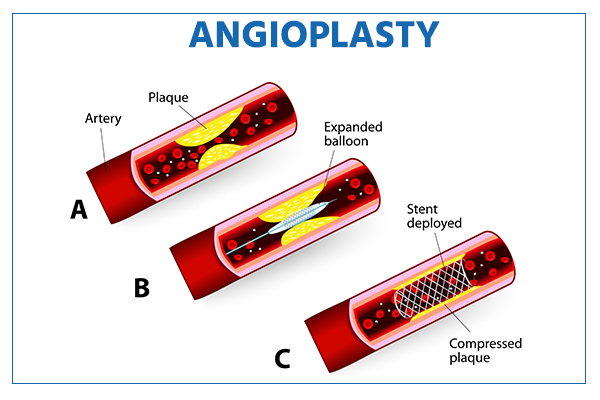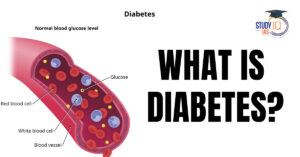Table of Contents
Angioplasty is a medical procedure designed to treat narrowed or blocked blood vessels, typically arteries. It is a commonly used intervention to improve blood flow to the heart and other organs. Angioplasty is a relatively safe and effective procedure. However, there are some risks associated with the procedure, such as bleeding, infection, and damage to the artery. In this article, we will discuss the various aspects of angioplasty, exploring its types, procedures, and key differences when compared to stents, angiography, and bypass surgery.
What is Angioplasty?
Angioplasty, also known as percutaneous transluminal angioplasty (PTA), is a minimally invasive procedure used to widen narrowed or obstructed arteries. This is often necessary when atherosclerosis (the buildup of plaque) causes a reduction in blood flow to vital organs, such as the heart or brain.

Types of Angioplasty
- Balloon Angioplasty: This is the most common type, involving the use of a catheter with a small balloon at its tip. The balloon is inflated at the site of the blockage, compressing the plaque and widening the artery.
- Atherectomy: In this variation, a catheter with a rotating shaver or laser is used to remove the plaque from the artery.
- Stent Placement: While not strictly an angioplasty type, stents are often deployed during angioplasty procedures. A stent is a small mesh tube that is placed at the site of the blockage to help keep the artery open.
| Type of Angioplasty | Description | Indications |
| Balloon Angioplasty | A catheter with a deflated balloon is used to compress plaque and widen the artery. | Atherosclerosis causes artery narrowing and reduced blood flow. |
| Drug-Coated Balloon Angioplasty | Similar to balloon angioplasty, the balloon is coated with a medication to reduce the risk of restenosis. | Cases with a higher risk of restenosis. |
| Cutting Balloon Angioplasty | Balloon with small blades creates micro-incisions in the vessel wall to facilitate expansion. | Used when plaque is particularly dense or calcified. |
| Rotational Atherectomy | High-speed rotating burr grinds and removes plaque from the artery. | Employed for heavily calcified lesions. |
| Laser Angioplasty | Laser catheter emits concentrated light energy to vaporize or break down plaque. | Used when other methods are less effective. |
| Directional Atherectomy | A catheter with a rotating blade cuts and removes plaque from the artery. | Employed when plaque removal is necessary. |
| Stent Placement | Mesh-like tubes are inserted to keep the artery open after angioplasty. | Used to maintain the patency of the artery and reduce the risk of restenosis. |
Angioplasty vs. Stent
Angioplasty and stent placement are often performed together. While angioplasty involves the use of a balloon to open the artery, a stent is a small, mesh-like device that is inserted into the treated area to prevent the artery from narrowing again. Essentially, the stent acts as a scaffold to maintain the widened state achieved by angioplasty.
| Angioplasty | Stent Placement | |
| Definition | Minimally invasive procedure to open narrowed arteries. | Involves the insertion of a mesh-like device (stent) to keep the artery open after angioplasty. |
| Procedure | Uses a catheter with a balloon to compress plaque. | Involves the deployment of a stent at the site of the blockage to maintain the widened state achieved by angioplasty. |
| Objective | Widen the narrowed artery for improved blood flow. | Provide structural support to the artery and prevent it from re-narrowing (restenosis) after the angioplasty procedure. |
| Components | Balloon catheter. | Stent (mesh-like tube). |
| Treatment Area | Targeted at the narrowed or blocked segment of artery. | Primarily focuses on the treated area post-angioplasty to prevent recurrence of narrowing. |
| Invasiveness | Minimally invasive. | Minimally invasive (often performed during angioplasty). |
| Risk of Restenosis | Potential risk due to elastic recoil of the artery. | Reduced risk due to the structural support provided by the stent. |
| Application | Initial intervention to open the narrowed artery. | Often used in conjunction with angioplasty to maintain the patency of the artery. |
| Procedure Length | Generally shorter. | May add some time to the overall procedure. |
| Recovery Time | Shorter recovery time compared to stent placement. | Recovery time may be influenced by the presence of the stent. |
| Long-Term Considerations | Follow-up may be needed to monitor for restenosis. | Requires adherence to antiplatelet medications to prevent blood clotting and routine follow-up for monitoring. |
We’re now on WhatsApp. Click to Join
Angioplasty vs. Angiography
Angioplasty and angiography serve different purposes. Angiography is a diagnostic procedure that uses contrast dye and X-rays to create detailed images of blood vessels. It helps identify blockages or narrowing in the arteries but does not treat them. Angioplasty, on the other hand, is a therapeutic procedure that aims to address the identified blockages by widening the narrowed arteries.
| Angioplasty | Angiography | |
| Purpose | To open narrowed or blocked arteries, improving blood flow. | Diagnostic procedure to visualize blood vessels. |
| Procedure Type | Therapeutic – Treat the identified blockage. | Diagnostic – identifies blockages and other issues. |
| Components | Involves the use of a catheter and a balloon (sometimes a stent). | Utilizes a catheter, contrast dye, and X-rays. |
| Objective | To restore blood flow through the affected artery. | To obtain detailed images of blood vessels. |
| Invasiveness | Minimally invasive procedure. | Minimally invasive diagnostic procedure. |
| Use of Contrast Dye | Yes, for visualizing the artery and the blockage. | Yes, to enhance the X-ray visibility of blood vessels. |
| X-ray Imaging | Used for guiding the catheter to the blockage and during the procedure. | Used extensively throughout the procedure. |
| Treatment Decision | Based on the identification of a significant blockage or narrowing. | Identifies and locates the blockage; treatment decisions come afterwards. |
| Follow-up | May require follow-up to monitor the treated area for restenosis. | Typically does not require follow-up for treatment. |
| Example Scenario | A patient with chest pain undergoes angioplasty to open a blocked coronary artery. | Patient with suspected arterial blockage undergoes angiography for diagnosis. |
Angioplasty vs. Bypass Surgery
While both angioplasty and bypass surgery address arterial blockages, they are distinct procedures. Angioplasty is minimally invasive, involving the use of a catheter, whereas bypass surgery is an open-heart surgery. In bypass surgery, a blood vessel from another part of the body is used to create a detour around the blocked artery, allowing blood to bypass the obstruction.
| Angioplasty | Bypass Surgery | |
| Procedure Type | Minimally invasive procedure. | Invasive surgical procedure. |
| Objective | To open narrowed or blocked arteries, improving blood flow. | To create a new pathway for blood flow, bypassing the blockage. |
| Components | Uses a catheter with a balloon (sometimes a stent). | Involves grafting a blood vessel to bypass the blocked artery. |
| Invasiveness | Minimally invasive compared to bypass surgery. | Invasive surgery requiring a chest incision. |
| Hospital Stay | Typically shorter hospital stays. | Longer hospital stays compared to angioplasty. |
| Recovery Time | Generally quicker recovery compared to bypass surgery. | Longer recovery time, including rehabilitation. |
| Suitability | Suitable for less severe blockages and in certain cases of acute events. | Suited for more extensive blockages or multiple blockages. |
| Risk of Complications | Lower risk of complications compared to bypass surgery. | Higher risk of complications, including infection and bleeding. |
| Long-Term Results | May require additional interventions over time. | Generally provides more durable and long-lasting results. |
| Postoperative Care | Requires adherence to medication and lifestyle changes. | Requires strict adherence to postoperative care, including medication. |
| Use of Heart-Lung Bypass | Not used in angioplasty. | Often involves the use of a heart-lung machine during surgery. |
Procedure of Angioplasty
- Preparation: The patient is given sedation, and a local anaesthetic is applied to the insertion site, often in the groin or wrist.
- Insertion of Catheter: A catheter is threaded through blood vessels to reach the affected artery.
- Angiography: Contrast dye is injected, and X-rays are taken to visualize the blockage.
- Balloon Inflation: The balloon at the catheter’s tip is inflated to compress the plaque and widen the artery.
- Stent Placement (if necessary): A stent may be inserted to maintain the widened state of the artery.
- Closure: The catheter is removed, and the insertion site is closed.
Angioplasty UPSC
Angioplasty is a vital procedure for treating narrowed arteries and improving blood flow. Understanding its types, procedures, and distinctions from stent placement, angiography, and bypass surgery is crucial for both patients and healthcare professionals. As with any medical procedure, it is essential to consult with a healthcare provider to determine the most suitable treatment based on individual circumstances.


 World Immunization Week (24 to 30 April)...
World Immunization Week (24 to 30 April)...
 National Panchayati Raj Day (24th April)...
National Panchayati Raj Day (24th April)...
 Understanding Type 5 Diabetes: The Malnu...
Understanding Type 5 Diabetes: The Malnu...






















